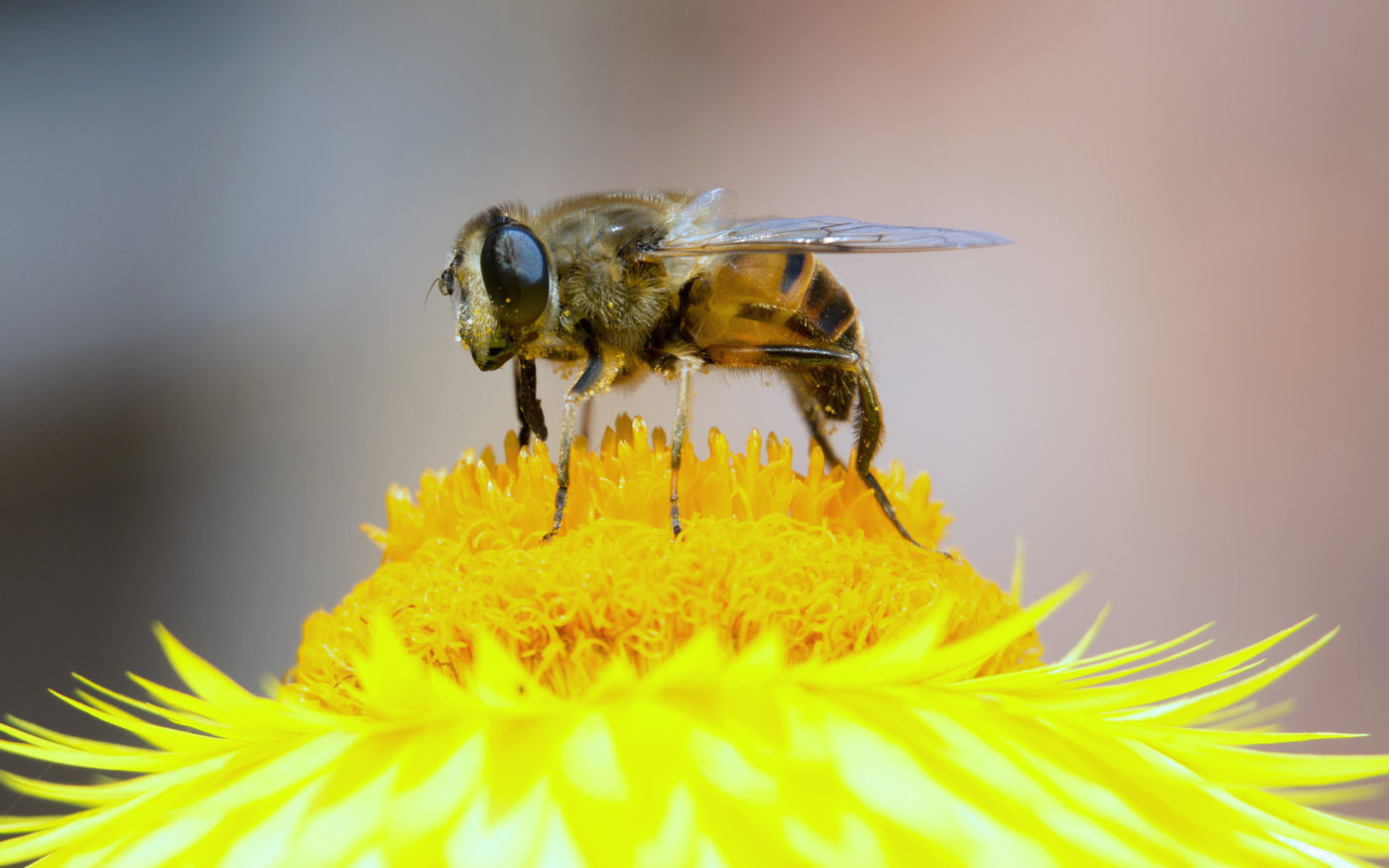Order
True flies
The true flies (Diptera) include many well-known groups: e.g. mosquitoes, crane flies (‘daddy-longlegs’), midges, horseflies, bluebottles, and houseflies. They all have only one pair of membranous wings (the forewings), most of them have large eyes, and they do not have a narrow waist in the middle of their body. There are at least 6000 species of true flies in Britain. Among these, the hoverflies are remarkable because – as their common name indicates – they can hover perfectly while in flight, but also because most of the species imitate the appearance of bees, bumblebees and wasps. The drone-flies (Eristalis tenax and similar related species) are particularly noted for their mimicry of honeybees.
What do they look like?
The Drone-Fly is 10-12 mm long. Its body is darkish brown with orange-yellow patches on the sides and upper surface, and it is covered with short fine hairs. It looks remarkably like a honeybee (Apis mellifera) but, unlike the bee, it has only one pair of wings, it has large eyes, its antennae are inconspicuous, and its body does not have a narrow waist: it also has no sting!
The different species of Eristalis are very difficult to distinguish, but Eristalis tenax is one of the commonest of these honeybee mimics.
Where do they live?
The adults feed on nectar from flowers and are often seen hovering in front of flower blooms in gardens in both urban and rural areas. The larvae feed on rotting organic material in stagnant water in a variety of locations.
Where can they be found?
The Drone-Fly is widely found in mainland Britain.
When can you see them?
In southern England, adults can often be seen on sunny days from March onwards: peak activity occurs on sunny summer days when flowers are abundant. However, the adults hibernate in the winter, and they can therefore also be seen on mild days in January and February as well as late in the year (e.g. on ivy flowers from October to December).
Life cycle
The larva of the Drone-Fly feeds on decaying organic material in stagnant water in small ponds, ditches and drains. Such water usually contains little or no oxygen and the larva breathes through the long thin tube that extends from its rear end to the surface of the water and that gives it its common name of ‘rat-tailed maggot’.
What do they do?
Drone-Flies play an important role in the pollination of wild flowers and many food crops.
Did you know?
Drone-Flies don’t just mimic the appearance of honeybees, they fly like them too. Recent research has shown that the flight behaviour of Eristalis tenax is more similar to the flight of the honeybee than to that of related flies.
Because ‘rat-tailed maggots’ are associated with unsavoury rotting material in stagnant water, archaeologists who have found the remains of many of these larvae in deposits from a site in central London believe this confirms that the city must have been a very smelly place in mediaeval times.

